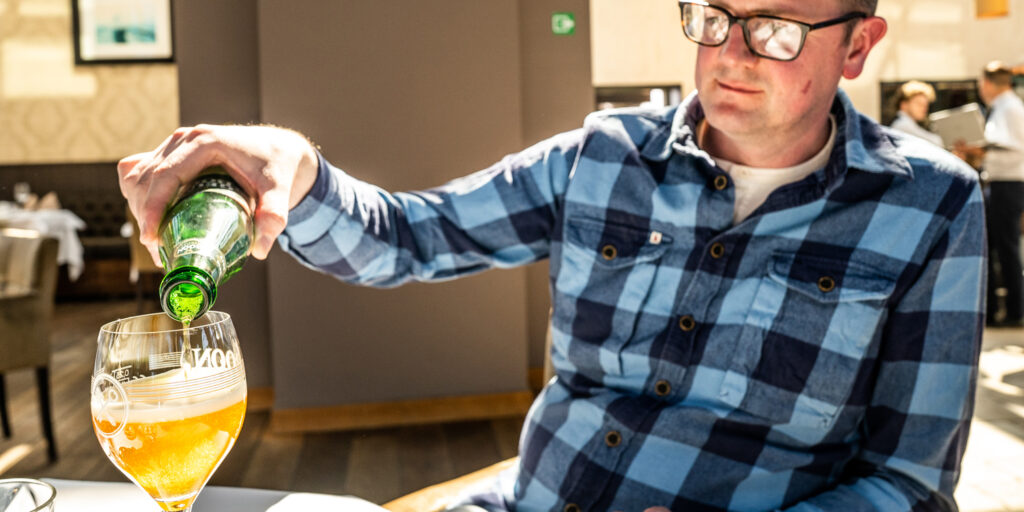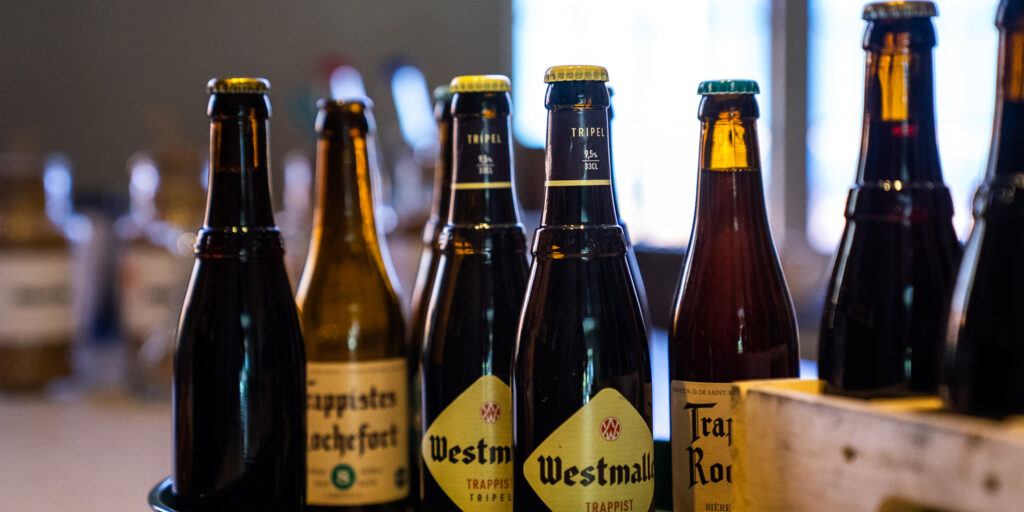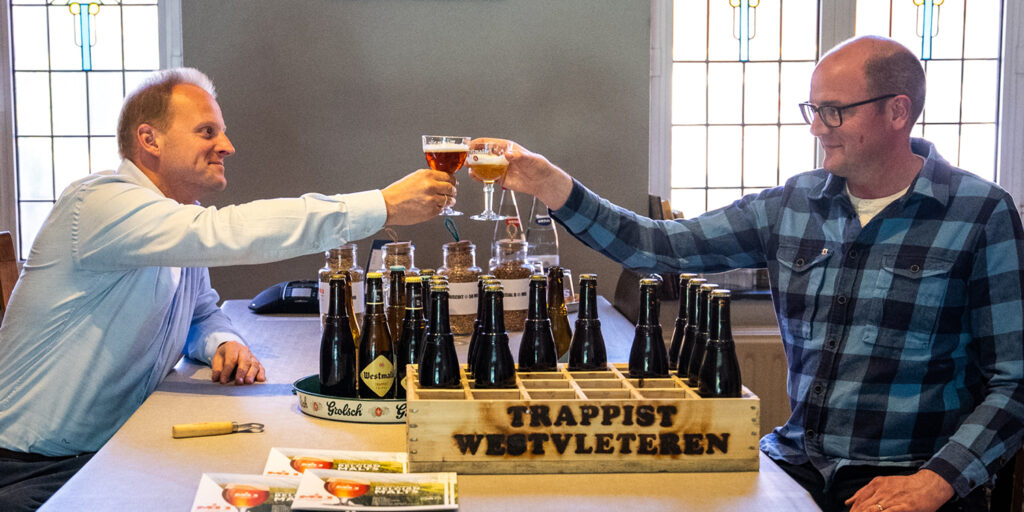Are Belgian Beers Ready for Long Overdue Comeback?
There was once a time, around a decade ago, when Belgian beers were central to my experience as a beer enthusiast. I remember trying to memorise the names (and taste of all the beers brewed by) the then seven Belgian Trappist breweries, which included stockpiling bottles of Orval so I could compare aged bottles to the fresh version. My favourite restaurant was Belgo, the monastic-themed, moule frite-centred dining hall in Covent Garden. I even attempted to start something resembling a Lambic collection – which failed, because it turns out I lacked both the budget and the willpower to do so.

At some point, however, my interest in Belgian beer began to wane. Perhaps I had taken one too many trips over the channel, and the shine was starting to wear off. Or maybe I was simply more enamoured with other drinking cultures and the beers central to them instead. I respected the significance of the Belgian classics, sure, but I wasn’t filling my fridge with them like I used to, and I’ve started to wonder why.
Trends in beer are cyclical; styles and trends will forever come and go. For the past few months I’ve noticed an emerging feeling, urging me to explore Belgian styles once again. Why is it, exactly, that certain beer cultures can slide in and out of focus, and how can we be mindful of this in relation to our enjoyment of them?
I fondly remember a trip to Belgium in March 2017. A bunch of fellow beer writers and I had decided to take the train to Roeselare, a small city in the Belgian region of West Flanders – and most importantly, home of the legendary Rodenbach brewery.
We boarded a Eurostar at London St. Pancras Station at the crack of dawn, coffees and croissants clutched tightly in our tired hands. We alighted a couple of hours later in the French city of Lille, just a few miles away from the Belgian border, and Roeselare itself. Here we visited a branch of local supermarket chain Carrefour, and our coffees were replaced with a few classic beers, priming our excitement ahead of touring one of Belgium’s most influential beer producers.
Here is where things got a little interesting. Unbeknown to us, Lille station is split into two parts: a French speaking one that dominates most of the building, and a smaller group of platforms operated by Flemish speaking services that serve Belgium. On asking a French guard which platform we needed to be on to catch our direct train to our intended destination, we were met with confused shrugs, and were instead directed to a different, completely incorrect train.
That’s how I came to spend an hour in a field, somewhere between France and West Flanders, served only by an hourly train going in either direction, not knowing if I would ever make it to Rodenbach. Make it we did, however, after a quick shuffle across the platform towards a train we were at least 60% sure was going where we wanted it to, my plastic carrier bag full of Westmalle Tripel clinking away in my right hand. After a short walk from Roeselare station we finally arrived at the brewery, albeit an hour later than scheduled. There we were met by the brewery’s head of operations, Rudi Ghequire, who handed us a glass full of the scarlet hued, foeder matured beer that has earned Rodenbach a lofty reputation among beer drinkers around the world.
I then proceeded to receive what I can only describe as the most editorialised brewery tour I’ve perhaps ever been on, and I say that as someone who has been on a lot of brewery tours. It started with a video explaining the history of the brewery, one Ghequire himself is well versed in, having worked here as a brewer since 1982.

It was very clear that the brewery had a fascinating past, but also that it was entrenched in this history, perhaps to a point of removing it from what was happening all around it as beer culture shifted and evolved all over the world. It’s something I’ve seen before with very traditional British breweries, but it felt even more significant here, as though it dominated its worldview, and was somehow holding it back.
After the video ended, we began to gradually work our way through the vast halls that contain the large oak foeders which are used to mature Rodenbach. Each of them are host to a specific culture of yeast and bacteria which, when the finished beers are blended, give them the signature tart, fruity taste they’re known for. We learned how different ages and blends of beers are used to produce different products; my preferred Grand Cru, for example, contains one third young beer and two thirds foeder beer that had been matured for two years.
We were shown the now defunct original copper brewhouse, immediately followed by the state of the art stainless steel one that had recently been installed in the building directly across from it. There was no semblance of tradition here, just high tech, computer-controlled machinery, designed to produce beer to exacting specifications. While no less fascinating, the enchanting atmosphere of the foeder room suddenly felt very far away.
Near the end of the tour, we were shown a video which featured the beer writer Michael Jackson, who sadly passed away in 2007. In it, Jackson lifted a glass of ruby red beer towards the camera, and then spoke a short piece to camera: “Rodenbach is the best beer in the world,” he proudly stated.
Don’t get me wrong, it’s up there. But like a lot of the tour, it felt forced, as though the history was controlling how the brewery acted, and presented itself. I started to think about other Belgian beers, such as the Westmalle Tripel in my carrier bag, of strong golden ales like Duvel and the Lambic of the Senne Valley, of sweet Dubbels and dry, delicious Saisons. My experiences at traditional Belgian breweries all had one thing in common: their story seemed to carry more significance than the beer itself.
Beer writers have a lot to do with this, and none more so than Jackson himself. When his seminal book, The Great Beers of Belgium was published in 1991, it bolstered the entire nation’s industry. Once near-forgotten beers were suddenly being imported by the container load to the United States, where Jackson arguably had his largest, and most captive audience. Such was his influence that in 2006 he appeared as a guest on Late Night with Conan O’Brian, around 15 months before he sadly passed away. It’s no wonder that Rodenbach still shows visitors the video clip they more than likely paid him to star in, as this was returned in kind via supremely high export volumes.
Slowly, but surely, in a post-Jackson (nay post-craft) era, the popularity of Belgian beers feels as though it has been in steady decline. I remember a few years ago taking some bottles of Cantillon and 3 Fonteinen to share with American friends, and how excited they were, because you could no longer buy them straight off the shelf for love, nor money. On my most recent trip to Colorado in April 2023, my favourite liquor store had a whole shelf of dust-covered Geuze for sale. Alongside them were similarly short dated Saisons and Tripels from some of the most well-known Belgian producers you could imagine.
Any American, or indeed British beer enthusiast understands how important the influence of Belgian beer is to world beer culture. But over the past decade, with the rise of the modern brewery and their focus on English and American beer styles, our attention has been drawn elsewhere. Belgian beers are also typically strong and complex, and post-pandemic consumers have felt the draw towards simpler, more sessionable pints that are easier on the alcohol (and the bank balance). It could be a simple case of the fact that ‘Belgian Beer’ doesn’t quite fit in with current alcohol trends. Basically, it hasn’t been its time, but surely it will come around again?

All those stories they proudly tell, and all that history, it means something. While it may have the capacity to obscure what is happening in the wider brewing world, I believe it also equips Belgian breweries with the power to sneak their way back into our consciousness, one glass of beer at a time. I experienced this recently, standing at the bar within Leeds institution North Bar while scanning a list of pale ales and IPAs. None of them really grabbed my attention, but I remembered that they keep plenty of Orval in stock. I decided to order one, and it was promptly served in the correct glassware, brimming with foam, and tasting magnificent. They even asked if I wanted an aged or young beer, and if I’d prefer to have it served at fridge or cellar temperature. It made me want to lose myself in Belgian beer once again. (And for those interested, I like young Orval, served chilled).
It can’t just be me either, because I am seeing signs of it elsewhere, too. Queer Brewing is hopelessly dedicated to bringing back the Belgian Witbier, a style that – thanks to Hoegaarden – was once ubiquitous across bars all over the UK. Today it’s seemingly lost its appeal, but if a young and exciting brewery such as this is interested in making it, then surely there must also be an audience out there interested in drinking it.
On a visit to Track Brewery in Manchester last week I couldn’t help but notice that they had released a Saison on draft – not a tart and sour mixed-fermentation version either, but a clean, spicy, dare I say funky version inspired by classics such as the evergreen Saison Dupont. Just down the road from here is the soon to be opened taproom of Balance Brewing and Blending, which is focussed entirely on wild and mixed culture ales, their roots deeply entrenched in Belgian influences.
Maybe this is just the tip of the iceberg and we’ll start seeing other breweries producing classic styles such as Belgian Stout, Strong Golden Ale, or my personal favourite kind of Belgian beer, the noble Tripel. If you consider that today’s breweries also have access to the same ingredients as those used by the Trappist monks themselves, such as Dingemans Malt, produced in Antwerp, then there’s no excuse for breweries to take inspiration from the classics and help bring Belgian styles back into fashion.
These might just be a few cracks in the ceiling letting through a few rays of hopeful light, but I genuinely get the sense people are starting to think about Belgian beers again. Of course, with anything cyclical it could also be argued that they never went away, but maybe the next time we pick up a few beers it might be worth reminding ourselves of the Belgian classics, as they undoubtedly still have the capacity to both inspire and delight, just as they always have.
— Matthew Curtis